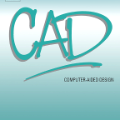Medical brain image analysis is a necessary step in Computer Assisted /Aided Diagnosis (CAD) systems. Advancements in both hardware and software in the past few years have led to improved segmentation and classification of various diseases. In the present work, we review the published literature on systems and algorithms that allow for classification, identification, and detection of White Matter Hyperintensities (WMHs) of brain MRI images specifically in cases of ischemic stroke and demyelinating diseases. For the selection criteria, we used the bibliometric networks. Out of a total of 140 documents we selected 38 articles that deal with the main objectives of this study. Based on the analysis and discussion of the revised documents, there is constant growth in the research and proposal of new models of deep learning to achieve the highest accuracy and reliability of the segmentation of ischemic and demyelinating lesions. Models with indicators (Dice Score, DSC: 0.99) were found, however with little practical application due to the uses of small datasets and lack of reproducibility. Therefore, the main conclusion is to establish multidisciplinary research groups to overcome the gap between CAD developments and their complete utilization in the clinical environment.
翻译:医学脑部图象分析是计算机辅助诊断系统的一个必要步骤。过去几年中硬件和软件的进步改善了各种疾病的分类和分类。在目前的工作中,我们审查了出版的关于系统和算法的文献,这些系统和算法能够对大脑MRI图象的白物质高密度进行分类、识别和检测,特别是在缺血性中风和脱阴性疾病的情况下。在选择标准方面,我们使用了生物计量网络。在总共140份文件中,我们选择了38个涉及本研究主要目标的文章。根据对订正文件的分析和讨论,深入研究新模型的研究和建议不断增长,以达到缺血性和脱光性损伤的高度准确性和可靠性。发现有指标的模型(Dice Scow,DSC:0.99),然而由于使用小数据集和缺乏再现能力,我们很少实际应用。因此,主要结论是建立多学科的临床研究小组,以克服它们之间在CAD和CAD之间的全面发展。





